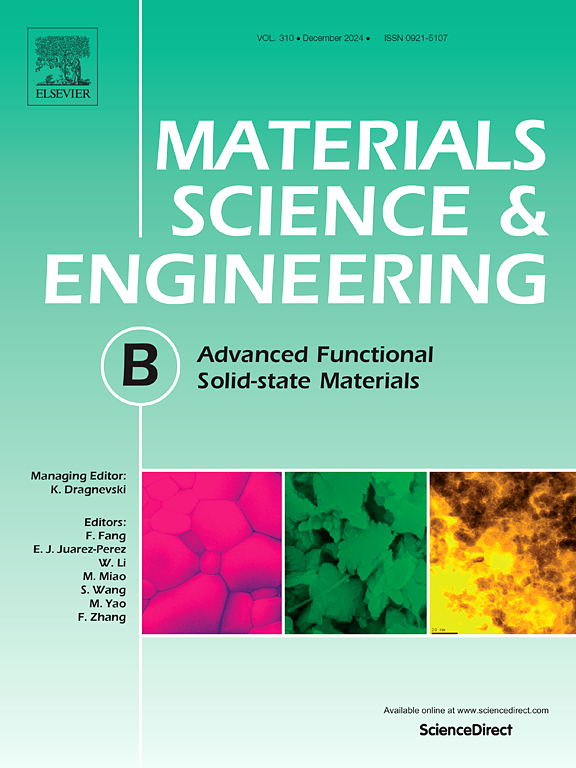Carbon quantum dots/polypyrrole nanocomposite film as a quartz-crystal microbalance-based formaldehyde sensor
IF 4.6
3区 材料科学
Q2 MATERIALS SCIENCE, MULTIDISCIPLINARY
引用次数: 0
Abstract
Formaldehyde is a hazardous indoor air pollutant due to its adverse effects on human health, highlighting the importance of precise monitoring and detection. Carbon quantum dots (CQDs)/polypyrrole (PPy) nanocomposites are attractive due to the synergistic behavior of constituents, and hence their films were selected to form a quartz-crystal microbalance (QCM) sensor for formaldehyde vapor. The CQDs/PPy nanocomposite film coated on the QCM electrode was fabricated by embedding CQDs into the PPy film through their adsorption from an aqueous medium onto the PPy film. The frequency change was linearly correlated with the formaldehyde concentration. The CQDs/PPy composite film detected a low concentration range of 0.58–5.82 mg L−1, which supports the high sensitivity of the composite film-based QCM sensor. The sensor exhibited good selectivity, reproducibility, stability, and repeatability for formaldehyde detection. The adsorption mechanism was explored. The diffusion of formaldehyde into the PPy and the CQDs/PPy nanocomposite films was studied.

碳量子点/聚吡咯纳米复合膜作为石英晶体微天平基甲醛传感器
甲醛是一种有害的室内空气污染物,对人体健康有不利影响,因此对其进行精确监测和检测十分重要。碳量子点(CQDs)/聚吡咯(PPy)纳米复合材料由于其组分的协同行为而具有吸引力,因此选择其薄膜形成石英晶体微平衡(QCM)传感器来检测甲醛蒸气。通过将CQDs从水介质吸附到PPy薄膜上,将CQDs包埋在PPy薄膜上,制备了涂覆在QCM电极上的CQDs/PPy纳米复合薄膜。频率变化与甲醛浓度呈线性相关。CQDs/PPy复合膜的检测浓度范围为0.58 ~ 5.82 mg L−1,支持复合膜QCM传感器的高灵敏度。该传感器对甲醛检测具有良好的选择性、重现性、稳定性和重复性。探讨了吸附机理。研究了甲醛在聚吡啶和CQDs/聚吡啶纳米复合膜中的扩散。
本文章由计算机程序翻译,如有差异,请以英文原文为准。
求助全文
约1分钟内获得全文
求助全文
来源期刊

Materials Science and Engineering: B
工程技术-材料科学:综合
CiteScore
5.60
自引率
2.80%
发文量
481
审稿时长
3.5 months
期刊介绍:
The journal provides an international medium for the publication of theoretical and experimental studies and reviews related to the electronic, electrochemical, ionic, magnetic, optical, and biosensing properties of solid state materials in bulk, thin film and particulate forms. Papers dealing with synthesis, processing, characterization, structure, physical properties and computational aspects of nano-crystalline, crystalline, amorphous and glassy forms of ceramics, semiconductors, layered insertion compounds, low-dimensional compounds and systems, fast-ion conductors, polymers and dielectrics are viewed as suitable for publication. Articles focused on nano-structured aspects of these advanced solid-state materials will also be considered suitable.
 求助内容:
求助内容: 应助结果提醒方式:
应助结果提醒方式:


